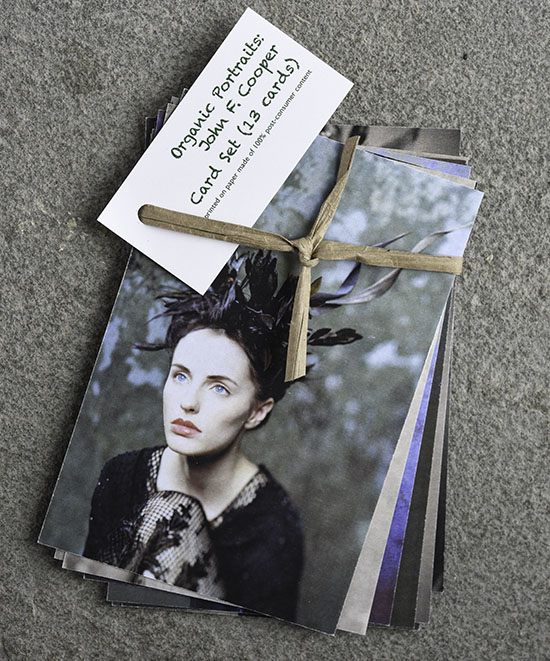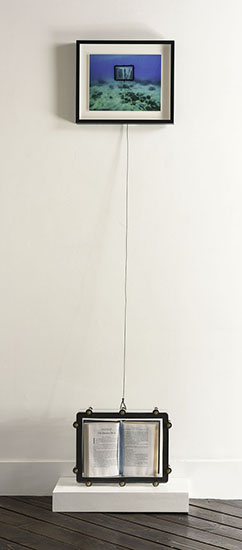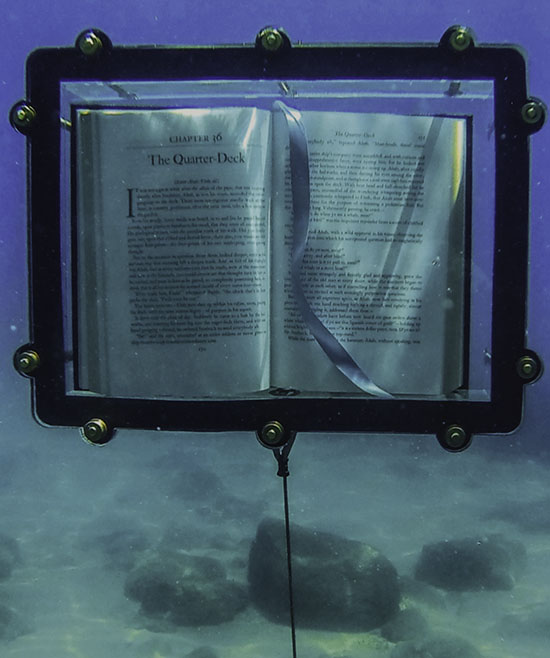From March 19th to June 26th, the Morris Museum in Morristown, New Jersey will exhibit Organic Portraits: John F. Cooper in conjunction with Green from the Get Go: International Contemporary Basketmakers. Photographer John F. Cooper’s Organic Portraits series and his book of the same name are the result of a creative project that has has been part of his life for well over a decade. “From the beginning,” Cooper explains, “the intent of the Organic Portraits project was to create a series of timeless and fundamentally beautiful images that would create awareness for—and help preserve—the world’s rainforests. In the 1950s, around the time I was born, about 15 percent of Earth’s landmass was covered with oxygen-generating and carbon-dioxide storing rainforests. As of the time of this book’s publication, fewer than 70 percent of those forests remain; more of these crucial ecosystems could disappear by the close of this decade. It is my belief they benefit the world more by being present rather than existing only in photographs, videos and the annals of history. The aim of this project is to drive home the understanding that our rainforests— the lungs of our Earth— are both vital and in dire need of protection.” Cooper published Organic Portraits through a Kickstarter campaign; Cooper is donating all profits from the book, which is available in the Museum’s bookstore, to the Rainforest Action Network Fund.
The photographs in Organic Portraits feature models posed against classic and simple backdrops and incorporating natural elements into each model’s hair to create a unique hair sculpture. Most of the photographs produced for Organic Portraits utilized large-format Polaroid film. Polaroid is now extinct; it’s eerily prophetic that the very medium used to create a series of images intended to preserve the world’s rainforests is now, itself, no longer. The cameras used in the series –each a work of art in their own right –were a 1950 8×10 Deardorff View Camera, and a 1980 4×5 Deardorff View Camera. Handcrafted from mahogany and brass, they are beautiful pieces of functional sculpture that were designed to last. The cameras are no longer manufactured and only a handful survive in the world today.

A set of 13 John F. Cooper Postcards printed on paper made of 100% post-consumer content and is available at the Museum’s store
In creating these works, Cooper received generous support from 100 models, fashion designers, backdrop painters and studios, Peter D. Brown, who fabricated the organic hair sculptures and environmental advocates Summer Rayne Oakes and Nicolas Rachline. “The images we have created are as beautiful as they were when they were first born in our imaginations,” says Cooper. “The cause that they support—saving our rainforests and the indigenous people who call them home—is as vital, no, more so, than when the project first began.”
The Opening Reception for Organic Portraits and Green from the Get Go: International Contemporary Basketmakers will take place on March 31st from 6:30 to 8:30 pm. John F. Cooper will speak about his photographs at Tea and Treasures on Wednesday, May 18, 2016. The Morris Museum is located at: 6 Normandy Heights Road, Morristown, NJ 07960, accessible from New York City via www.njtransit.com. For more information: (973) 971-3700; info@morrismuseum.org or http://www.johnfcooper.com.



